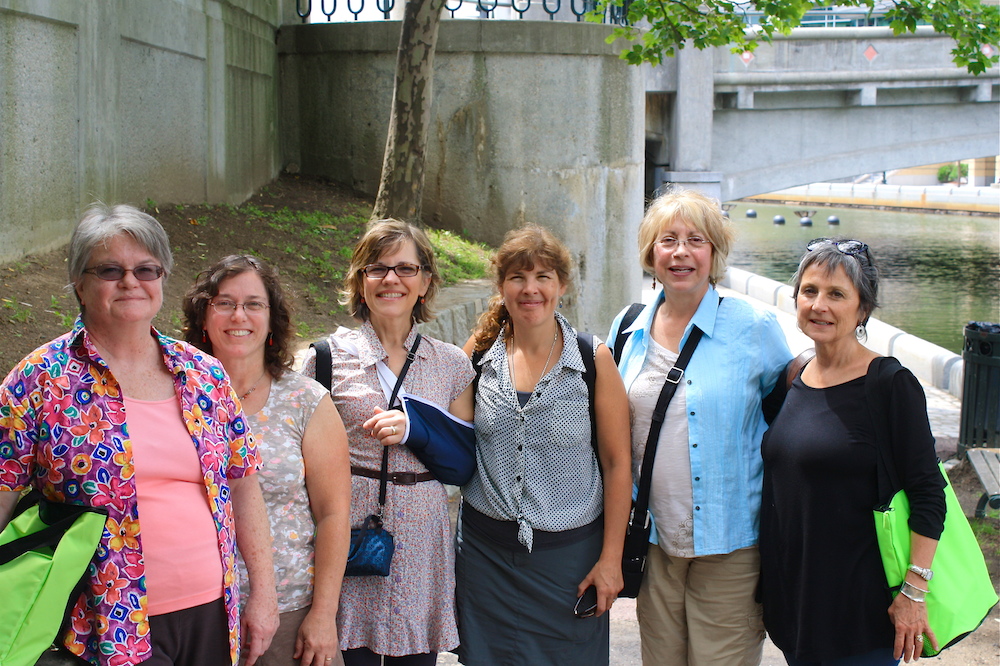I have been trying, with modest success, to understand the weave structure known as Turned Taqueté.
Turned Taqueté is described alternately as polychrome Summer and Winter but without tabby... or warp-faced compound plain weave... or like Samitum but based on plain weave, not twill.... Quite honestly, I do not have enough weaving background -- or I am not enough of a math-head -- to fully understand all the analyses and terminology. I do know that there is a tie-down weft and that the pattern warps float over three wefts and then are tied down as well. Ideally, the weft is much finer than the warp, allowing the warp pattern to show. And for what I want to do -- that is, paint two different warps and then weave them together in one fabric, so that the colors play against each other and with the pattern -- Turned Taqueté is terrific. Alliteration intended.
Simply put, this structure provides for a wonderful drape and beautiful design possibilities. I wove the sample above (and below) on 8 harnesses using two hand-painted warps in 20/2 silk and a weft of black 60/2 silk.
The incomparable Bonnie Inouye designed the pattern and I modified the treadling a bit. Below is a small version of the drawdown. (If you would like me to share with you the WIF file, send me an email at dkovn@hotmail.com.) The pattern appears in the most recent issue of the Complex Weavers Journal, in an article by Inouye, "Turned Taqueté, An Introduction." In the article, she also discusses how to draw this structure on a network, using either Fiberworks or WeavePoint software. Network drafting is another wonderfully intricate subject -- one that is discussed and illustrated at length in Marian Stubenitsky's new book, Weaving with Echo and Iris. Network drafting allows weavers to soften and curve their patterns, so that the structure appears fluid rather than rectilinear.
I think I have just dipped my toe in the water....
















